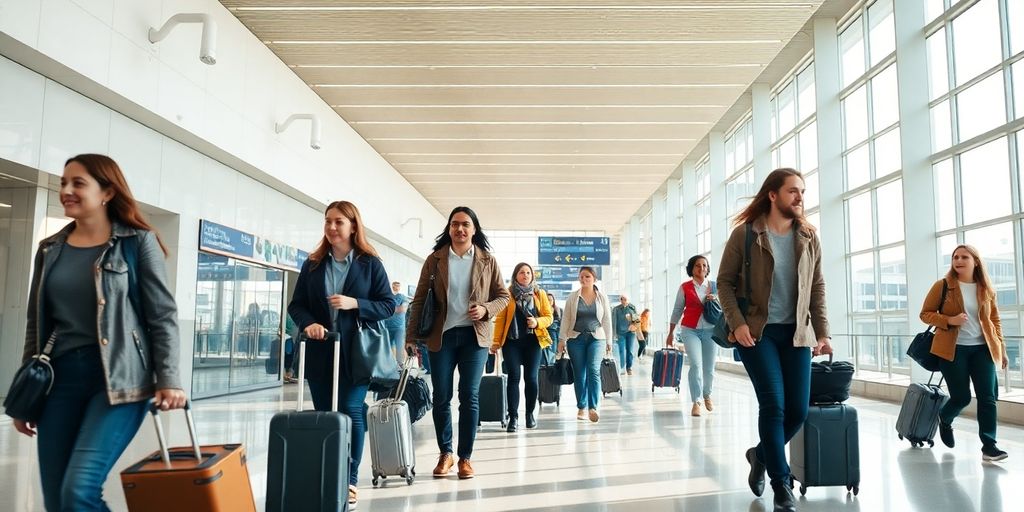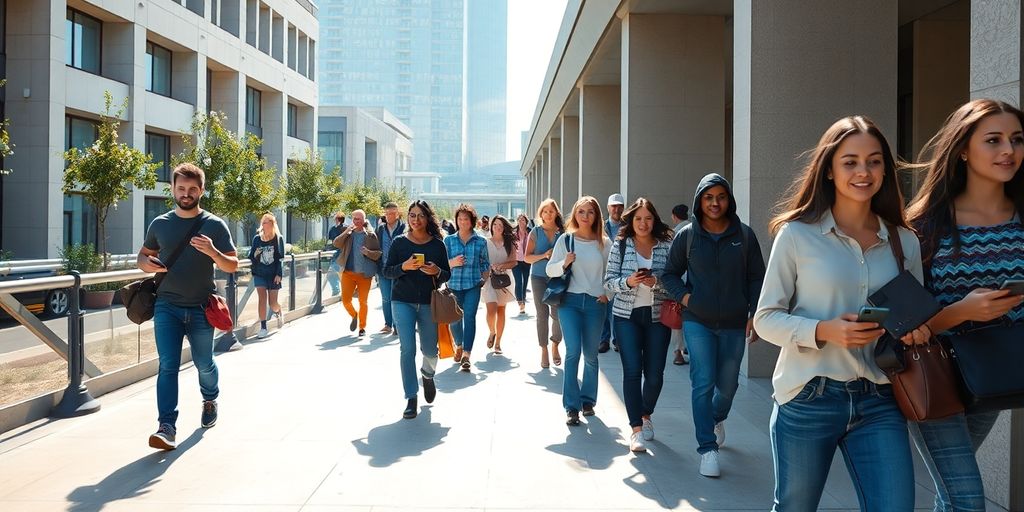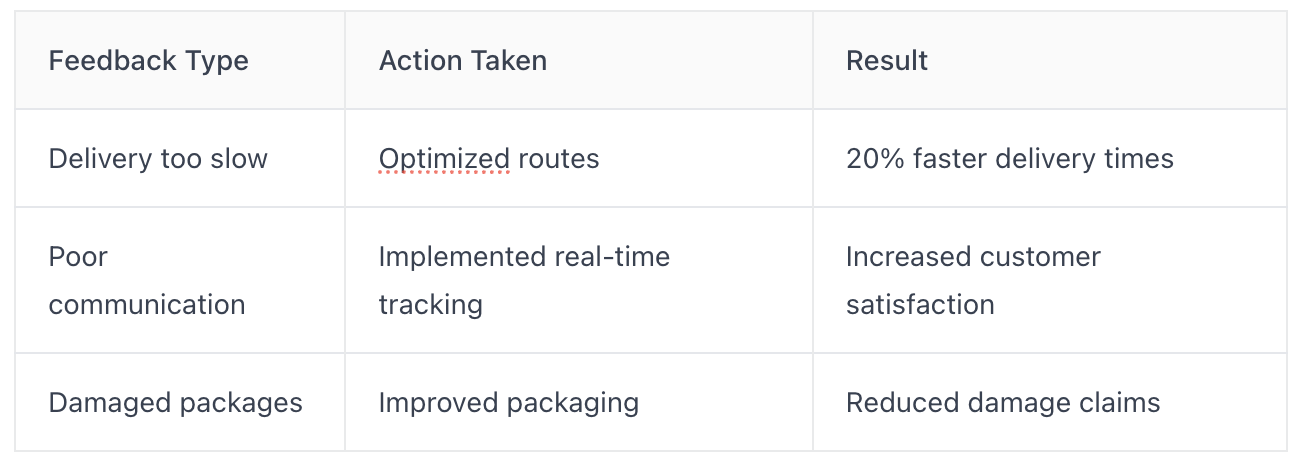Register as an organizer
Click the button below and finish your organizer registration, or fill out the form and we will be in touch to assist you.

Getting people where they need to go, especially for events, isn't just about handing over a ticket anymore. It's about making the whole trip easy, from their front door to the venue. We're talking about the 'last-mile attendee experience,' which means everything from how they get there to how they find their seat. It's a big deal because a smooth journey makes everyone happier and more likely to come back. This article will go over how to make that last part of the trip as good as it can be.
To really nail the last-mile attendee experience, you need a plan. It's not just about getting stuff to people; it's about making it easy, convenient, and maybe even a little delightful. Think about it – the last mile is the final impression, and you want it to be a good one. Let's look at some key areas.
Having an omnichannel approach is key. It means making sure your attendees have a consistent experience no matter where they interact with you. This could be online, at the venue, or through a mobile app. It's about making sure all the channels work together. For example, an attendee might order merchandise online and pick it up at a designated spot at the event. This requires a system that tracks inventory and communicates updates in real-time. It's more than just consistency; it's about creating a unified experience. This is especially important for event logistics.
Don't underestimate the power of local carriers. They know the area, the traffic patterns, and the best routes. They can often provide faster and more flexible delivery options than larger, national carriers. Plus, using local businesses can help support the local economy. They can offer personalized service that big companies just can't match. Think about it: a local courier might be able to hand-deliver a VIP pass right to an attendee's hotel room, while a larger company might just leave it at the front desk. It's that personal touch that can make a difference.
Efficiency is the name of the game. You want to get things to attendees quickly and cost-effectively. This means optimizing your delivery networks. Use data to figure out the best routes, the best times for delivery, and the best locations for distribution centers. Consider using technology like AI and machine learning to predict demand and optimize routes in real-time. It's about using data to make smart decisions and streamline the whole process. This can involve things like:
By optimizing your delivery networks, you can reduce costs, improve delivery times, and increase attendee satisfaction. It's a win-win for everyone involved.
It's not just about getting attendees through the door anymore; it's about making that final stretch of their journey as smooth and enjoyable as possible. In 2024, and moving forward, the focus is on creating memorable experiences that start well before the event itself. This means thinking beyond the ticket and focusing on innovative solutions that cater to the evolving needs of event-goers.
Technology is changing everything, and the attendee experience is no exception. Think about how XTIX is using AI to streamline event management. We need to be looking at ways to use tech to make things easier and more enjoyable for attendees. This could mean using apps for navigation, offering personalized recommendations, or even using virtual reality to give people a sneak peek of the event before they even arrive. It's all about using tech to create a more engaging and convenient experience.
Time is precious, and no one wants to waste it on frustrating logistics. The goal is to make the last-mile experience as quick and painless as possible. This could involve offering express check-in options, providing clear and concise directions, or even offering on-site transportation. The key is to identify the pain points in the attendee journey and find ways to eliminate them. By saving attendees time and reducing stress, you're creating a more positive and memorable experience.
It's about building a relationship with attendees that extends beyond the event itself. This means communicating effectively, providing personalized support, and creating opportunities for engagement. Think about using social media to connect with attendees before, during, and after the event. Consider offering exclusive perks or discounts to loyal attendees. By creating a sense of community and connection, you're turning attendees into advocates for your event.
The last-mile experience is an opportunity to make a lasting impression on attendees. By focusing on innovation, convenience, and connection, you can create an event that people will remember for all the right reasons. It's about going the extra mile to show attendees that you value their time and their business.
It's 2025, and if your attendee experience isn't top-notch, you're already behind. People want things fast, personalized, and, increasingly, sustainable. Let's look at some key solutions that are making waves this year.
AI and machine learning are no longer futuristic buzzwords; they're essential tools for optimizing delivery. Think about it: these technologies can analyze tons of data – traffic patterns, weather, past delivery times – to find the quickest, most cost-effective routes. It's not just about speed; it's about making smart decisions that save time and money. For example, machine learning can predict potential delays and automatically reroute deliveries to avoid them. This proactive approach keeps attendees happy and informed.
Open APIs are changing how businesses connect and share information. In the context of attendee experience, this means integrating different systems – ticketing, transportation, venue services – to create a unified, streamlined experience. Imagine an attendee using a single app to book their ticket, arrange transportation, and even order refreshments for their seat. That's the power of open APIs. They allow for seamless data flow and collaboration, making everything easier for both the attendee and the event organizer.
Route optimization isn't just about finding the shortest path; it's about considering all the factors that can impact delivery time and efficiency. This includes:
By using data analytics to optimize routes, businesses can reduce delivery times, lower costs, and improve attendee satisfaction. It's a win-win situation. Plus, with the rise of hyperlocal fulfillment, getting those last-mile routes perfect is more important than ever.
Data-driven route optimization is not just about efficiency; it's about creating a better experience for attendees. By using data to make smarter decisions, businesses can ensure that attendees receive their tickets, merchandise, or other items quickly and reliably, leaving them with a positive impression of the event.

Technology is changing how customers experience the final steps of getting their stuff. It's not just about getting a package from point A to point B; it's about making the whole process smooth and enjoyable. If you can't keep up with customer expectations for fast, perfect, and personalized deliveries, you might be in trouble.
Giving customers the ability to track their orders in real time is like handing them a VIP pass to their delivery experience. People want to know where their stuff is and when it will arrive. It turns the waiting game into something exciting and transparent. When people know when their stuff will arrive, they're happier and more likely to shop with you again. Transparency builds trust.
Personalization is key. Generic updates don't cut it anymore. Customers want to feel like they're more than just an order number. Think about sending updates tailored to their specific delivery, offering options for rescheduling, or even just a friendly message from the delivery driver. It's the little things that make a big difference.
Predictive analytics can help you anticipate problems before they even happen. By looking at data like weather patterns, traffic conditions, and past delivery performance, you can identify potential delays and take action to prevent them. This could mean rerouting drivers, adjusting delivery schedules, or even proactively contacting customers to let them know about a potential issue. It's all about being one step ahead.
Using predictive analytics isn't just about avoiding problems; it's about creating a better experience for your customers. By anticipating their needs and proactively addressing potential issues, you can build trust and loyalty. It shows that you care about their experience and are willing to go the extra mile to make sure they're happy.
Last-mile attendee experience is definitely at a turning point. We're seeing issues like city traffic, rising expenses, and a real push for greener methods. Luckily, there are some cool, innovative solutions popping up to tackle these problems and make deliveries more efficient and sustainable.
There's a big demand for sustainable logistics, and businesses are trying to make their last-mile operations more eco-friendly. Transportation is a huge source of emissions, so going green isn't just good for the planet, it's also a smart business move.
Here are a few ways companies are making deliveries more sustainable:
Embracing sustainability isn't just about being environmentally responsible; it's also about meeting customer expectations and gaining a competitive edge. People want to support businesses that care about the planet.
Electric vehicles are becoming more common for deliveries. They produce zero emissions, which helps reduce air pollution in cities. Plus, smart routing software can help drivers find the most efficient routes, avoiding traffic and saving fuel. This not only reduces emissions but also saves time and money.
Urban areas present unique challenges for last-mile delivery. Congestion, limited parking, and high population density can make it difficult to deliver packages quickly and efficiently. That's where micro-fulfillment centers come in. These smaller warehouses are located closer to customers, allowing for faster delivery times and reduced transportation costs. They can also help reduce traffic congestion by minimizing the distance delivery vehicles need to travel.

The world of getting things to people at events is changing fast. It's not just about getting a package from point A to point B anymore. It's about speed, convenience, and making sure the customer is happy every step of the way. To stay ahead, you need to understand what's driving these changes and be ready to adapt.
Customers today want things now. This demand for speed is reshaping the entire last-mile process. It's not enough to just offer fast delivery; you need to make the whole experience quick and easy. Think about how AI tools enhance event management by streamlining check-in and providing tracking summaries. People expect to know where their stuff is and when it will arrive, and they want it fast. According to recent data, 61% of shoppers expect delivery within three hours, so the pressure is on to deliver faster than ever.
Hyperlocal fulfillment is becoming a big deal. Instead of shipping from a central warehouse, companies are setting up smaller distribution centers closer to customers. This lets them get packages to people faster and cheaper. It also means they can offer more personalized service, like same-day delivery or even delivery within a couple of hours. This approach requires a deep understanding of local areas and the ability to adapt to changing conditions quickly. Local carriers can offer various delivery options like same-day or time-specific deliveries.
The market is always changing, and what worked yesterday might not work today. You need to be flexible and ready to adjust your strategy as needed. This means keeping an eye on new technologies, listening to customer feedback, and being willing to experiment with different approaches. For example, maybe you need to offer more delivery options, like drone delivery or delivery to a secure locker. Or maybe you need to invest in better tracking and communication tools. The key is to be proactive and always looking for ways to improve the last-mile experience.
Staying competitive means embracing change and finding new ways to meet customer needs. It's about being agile and responsive, and always looking for ways to improve the last-mile experience.
It's not enough to just deliver anymore; you need a system that can handle anything. Building a resilient last-mile attendee experience ecosystem is all about creating a network that can adapt, improve, and consistently meet customer needs, no matter what challenges arise. This means thinking beyond individual transactions and focusing on long-term sustainability and growth.
Think of it like this: you can't do it alone. Successful last-mile delivery relies on strong partnerships. This includes:
By creating a network of reliable partners, you can share resources, reduce costs, and improve overall efficiency. It's about building a community, not just a business.
Your team is your most important asset. Make sure they have the skills and knowledge they need to succeed. This means:
The best way to improve your last-mile delivery is to listen to your customers. Collect feedback through surveys, reviews, and social media. Use this information to identify areas for improvement and make changes accordingly.
Here's a simple table to illustrate the impact of feedback:

By continuously seeking and acting on feedback, you can create a last-mile delivery system that is constantly evolving and improving.
So, what's the big takeaway here? Making sure guests have a good experience right up to the very end of their journey isn't just a nice extra; it's a must-do. When you think about every little step, from when they first show up to when they finally leave, and you make those steps easy and clear, you're doing more than just being helpful. You're building trust and making them want to come back. It's about getting the small things right, because those small things add up to a really good time for everyone. And that's what keeps people happy and coming back for more.
The 'last mile' is the final, most important step in getting a product to a customer, from a local hub to their front door. It's often the hardest part because of traffic, many stops, and the need for speed. Making this step smooth and quick is key to happy customers.
We need to use smart plans that connect all parts of the delivery process, work with local delivery folks, and make our delivery routes super efficient. This means using technology to plan better and make sure everything runs smoothly from start to finish.
New tech like AI helps us find the best routes and predict problems before they happen. Also, sharing information between different systems using Open API makes everything work together better. This helps us deliver things faster and more reliably.
Yes, it's a big deal! Customers want to know where their stuff is at all times. Giving them real-time tracking, sending them updates, and even guessing what they might need next makes them feel important and in control. This makes them happy and keeps them coming back.
We're facing challenges like traffic jams, high costs, and the need to be green. But we're finding solutions! Things like using electric vans, planning routes to save gas, and having small storage spots closer to customers are helping us overcome these hurdles.
The world is changing fast. People want their things super quickly, sometimes even on the same day. Businesses need to be flexible and ready to change their plans to meet these new demands, like setting up small delivery hubs right in neighborhoods.
More blogs
Click the button below and finish your organizer registration, or fill out the form and we will be in touch to assist you.